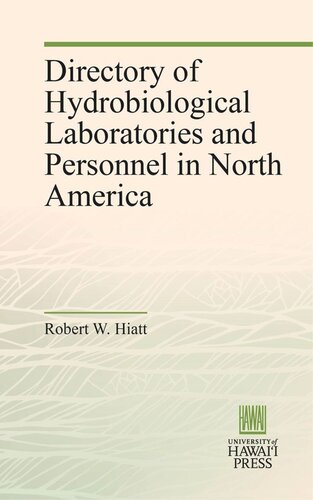

Most ebook files are in PDF format, so you can easily read them using various software such as Foxit Reader or directly on the Google Chrome browser.
Some ebook files are released by publishers in other formats such as .awz, .mobi, .epub, .fb2, etc. You may need to install specific software to read these formats on mobile/PC, such as Calibre.
Please read the tutorial at this link: https://ebookbell.com/faq
We offer FREE conversion to the popular formats you request; however, this may take some time. Therefore, right after payment, please email us, and we will try to provide the service as quickly as possible.
For some exceptional file formats or broken links (if any), please refrain from opening any disputes. Instead, email us first, and we will try to assist within a maximum of 6 hours.
EbookBell Team

4.7
76 reviewsGrowing interest in hydrobiology and the resulting increase in facilities for education and research have made an up-to-date directory of hydrobiological laboratories in North America a necessity.
The present directory, listing 187 laboratories, with provisions for instruction and research and scope of activities, is designed to be useful not only research scholars but to young scientists in training and to visiting investigators as well.
The address, senior officer, institutional affiliation, objectives, scope of activities, season of operation, and environments stressed are given for each laboratory. In addition, major research facilities, capital equipment, and provisions for publications are indicated as well as descriptions of accommodations available, instructional program, teaching facilities and scientific staff.
Biographical sketches of 1,300 personnel give institutional affiliation, mailing address, field of specialization, current research project, and field experience by geographical region.
A cross-reference index lists each laboratory under its official name, the sponsoring agency, and the area in which it is located.
Data for all laboratories are broken down into a treatment of inland laboratories (fresh-water) and coastal laboratories (marine), and finally segregated by geographical area.